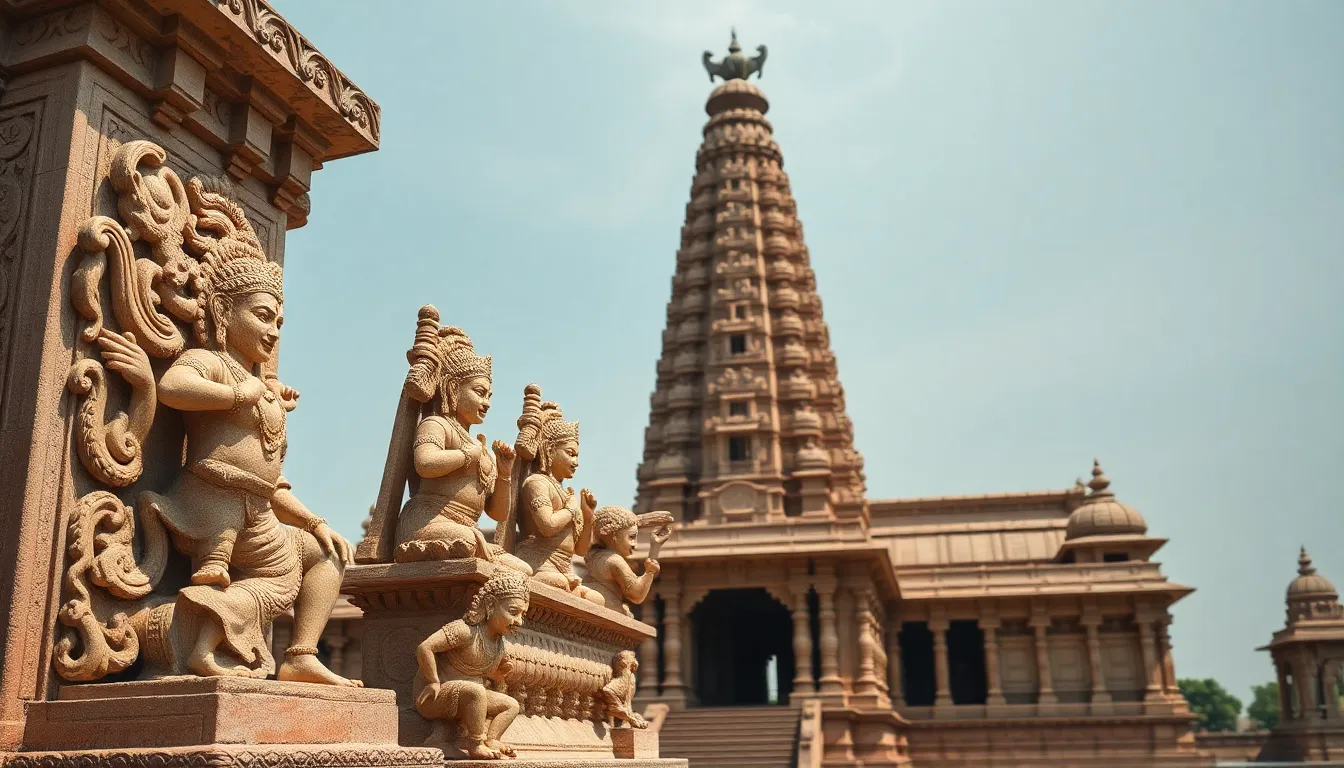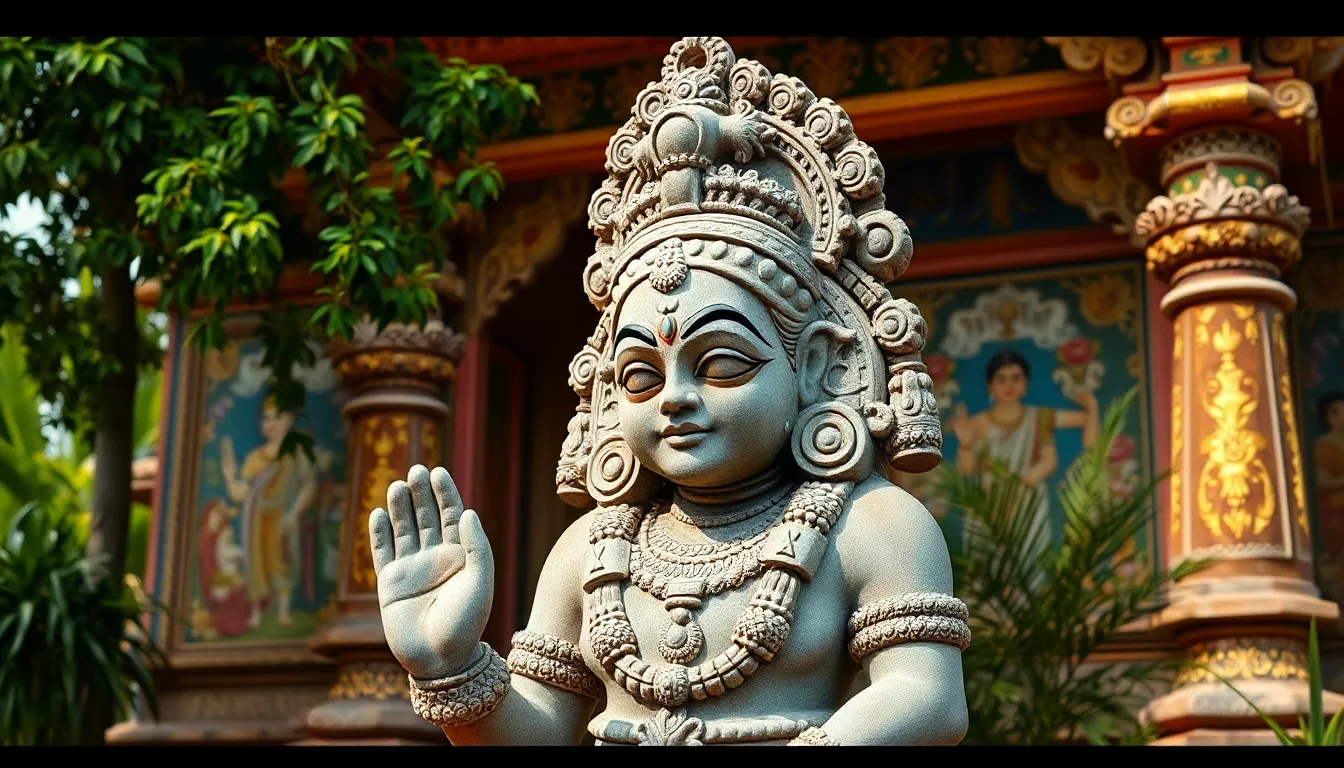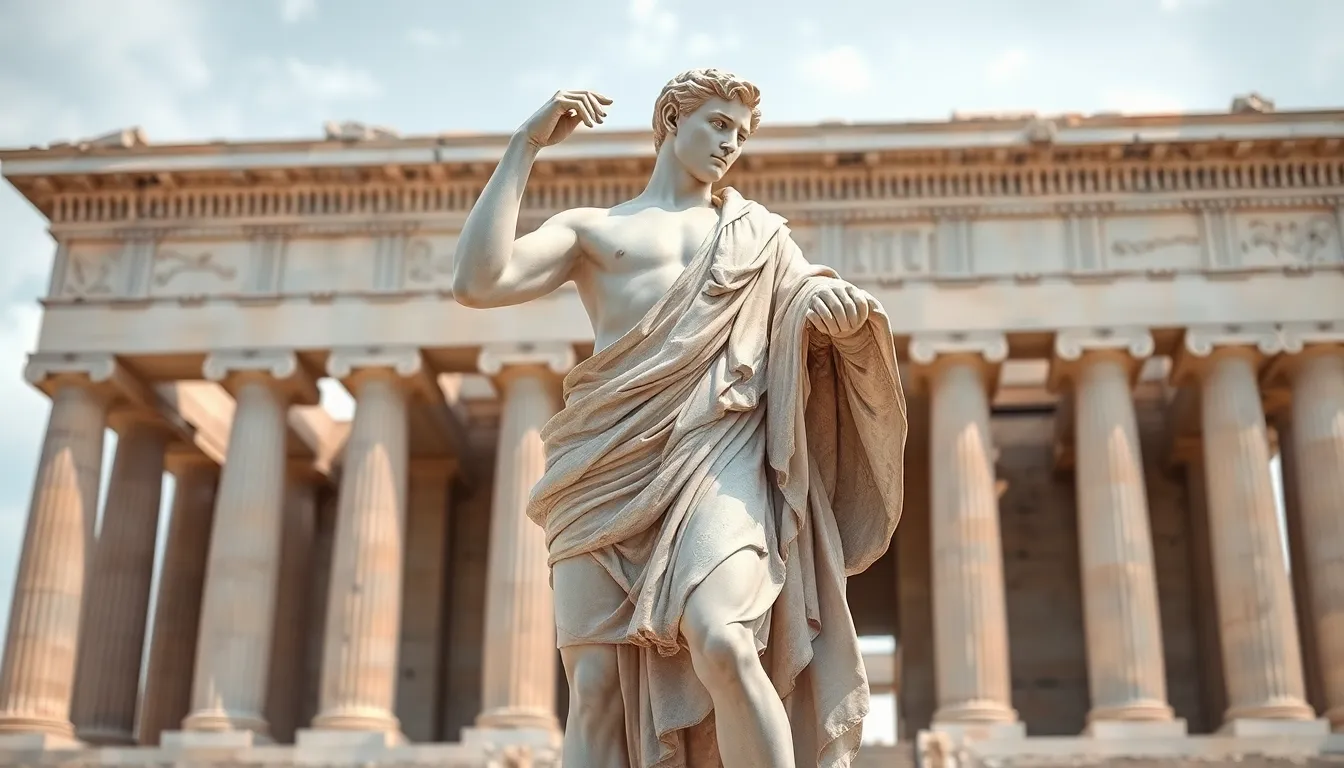Classical Indian art isn’t just a feast for the eyes; it’s a journey through time that’ll tickle your brain cells. Imagine vibrant colors, intricate designs, and stories woven into every brushstroke. This art form captures the essence of India’s rich culture and heritage, leaving viewers both mesmerized and slightly jealous of the artists’ skills.
From the elegance of miniature paintings to the grandeur of temple sculptures, classical Indian art reveals a world where creativity knows no bounds. It’s like stepping into a time machine where each piece whispers secrets of ancient traditions and divine inspiration. So grab a cup of chai, settle in, and prepare to explore the mesmerizing universe of classical Indian art, where every canvas has a tale to tell and every sculpture has a story worth hearing.
Table of Contents
ToggleOverview of Classical Indian Art
Classical Indian art encompasses a variety of forms that demonstrate the subcontinent’s diverse cultural heritage. The intricate craftsmanship of sculptures often showcases religious themes, conveying spiritual narratives that resonate with viewers. Miniature paintings highlight fine detailing, vibrant colors, and storytelling elements that invite deep exploration.
Murals and frescoes, frequently found in temples and palaces, depict historical events and mythological tales. They celebrate both the divine and the everyday, connecting the viewer to ancient beliefs and rituals. Careful deliberation in technique defines each piece, as artists use materials like natural pigments and gold leaf to enhance visual appeal.
The architecture involved in classical Indian art features ornate temple carvings and elaborate facades, illustrating the artisans’ devotion. Such structures serve both functional and aesthetic purposes, transforming spaces into sacred venues. Regions like Rajasthan, Karnataka, and Tamil Nadu exemplify the geographical diversity of this art, each area presenting unique styles and narratives.
Dance and performance art also hold significance, as classical dance forms such as Bharatanatyam and Kathak showcase visual storytelling. These performances incorporate elaborate costumes and expressive movements, offering viewers a dynamic interaction with the art form.
Celebration of classical Indian art goes beyond aesthetics; it also embodies philosophical and social themes rooted in culture. Every element within a piece reflects the values, traditions, and beliefs of its time, allowing modern audiences to connect with the past. Exploring classical Indian art reveals profound insights into the human experience across centuries.
Major Periods in Classical Indian Art

Classical Indian art spans diverse eras, each with distinct characteristics. Understanding these periods provides insight into the evolution of artistic expression in India.
Ancient Period
Art from the ancient period showcases early influences of religion and culture. This era, dating back to around 2500 BCE, includes sculptures and paintings dedicated to deities. Notable examples are found in the Indus Valley Civilization and the rock-cut caves of Ajanta. Artists prioritized intricate designs, employing natural materials for durability. Temples emerged as key sites, featuring detailed carvings that narrate mythological tales. Such artworks reflect the symbiotic relationship between art, spirituality, and community life.
Medieval Period
The medieval period, spanning from the 8th to the 16th centuries, marked significant advancements in techniques and styles. During this time, regional schools emerged, each showcasing unique cultural influences. Noteworthy are the Chola bronzes and miniature paintings from the Mughal era. Artists embraced new materials, allowing for more vibrant colors and complex forms. Temples became grander, with exteriors adorned with sculptures that depict divine narratives. This period exemplified the blend of architecture, painting, and sculpture, revealing a deeper understanding of aesthetic principles.
Modern Period
The modern period began in the 18th century, coinciding with colonial influences. Artists explored new themes, techniques, and mediums while maintaining traditional motifs. European artistic styles began to merge with Indian sensibilities, leading to unique hybrids. The Bengal School of Art emerged, emphasizing nationalistic themes and folk motifs. Artists pursued personal expression, departing from traditional norms while honoring heritage. This era signifies the transition from ancient traditions to contemporary interpretations, enriching the tapestry of classical Indian art.
Key Characteristics of Classical Indian Art
Classical Indian art is marked by its profound emphasis on themes and motifs, which often convey deeper spiritual narratives. Religious iconography represents a substantial part of this art form. Deities and mythological figures frequently surface in various artworks, depicting stories from ancient scriptures. Nature is another vital theme, represented through intricate floral patterns and animal forms. The balance between human experience and divine inspiration creates a rich visual language, allowing viewers to engage with the stories behind each piece.
Artisans employ a variety of techniques and materials, showcasing unmatched craftsmanship. Traditional paintings utilize natural pigments derived from minerals and plants, resulting in vibrant hues. Sculptors work with stone, bronze, and wood, each medium offering unique textures and durability. Intricate carving techniques enhance the three-dimensional quality of sculptures, capturing delicate details that animate the figures. The time-honored practice of using gold leaf in certain artworks adds a luxurious finish, further elevating the overall aesthetic. These techniques, combined with region-specific practices, symbolize the rich cultural history embedded in classical Indian art.
Prominent Art Forms
Classical Indian art encompasses various forms, each reflecting the rich cultural heritage of the subcontinent.
Sculpture
Sculpture stands out as a significant expression in classical Indian art, showcasing intricate craftsmanship and spiritual themes. Deities, figures, and narratives from mythology often dominate the subject matter. Notably, sculptures from the Chola dynasty highlight bronze casting techniques, resulting in exquisite pieces that convey divine tales. Temples across India display these ornate carvings, inviting contemplation and reverence.
Painting
Painting represents another vital category, featuring styles that capture storytelling through vibrant colors and fine detailing. Miniature paintings, especially from the Mughal era, showcase not just artistic finesse but also cultural narratives. Artists adeptly used natural pigments to achieve striking visuals, illustrating scenes of court life, battles, and mythology. This form encourages viewers to connect with historical moments and traditions.
Architecture
Architecture reflects the grandeur of classical Indian artistry through elaborate temple designs and intricate facades. Temples such as those in Khajuraho and Hampi exemplify detailed carvings that narrate spiritual and mythological stories. Structural elements often integrate sculptures, murals, and decorative motifs, presenting a divine connection to space. Regional variations enhance architectural diversity, with styles ranging from the ornate South Indian gopurams to the elegant Indo-Saracenic designs.
Classical Indian art stands as a testament to the country’s rich cultural tapestry. Its vibrant colors and intricate designs not only captivate the eye but also invite reflection on deeper spiritual and philosophical themes. Each artwork serves as a bridge connecting the past to the present, allowing viewers to appreciate the artistry and craftsmanship that have evolved over centuries.
This art form continues to inspire and educate, revealing the diverse narratives woven into its fabric. As individuals explore classical Indian art, they discover a world where every detail tells a story and every piece embodies the essence of a profound heritage. Embracing this artistic journey enriches one’s understanding of the cultural legacy that shapes contemporary India.





